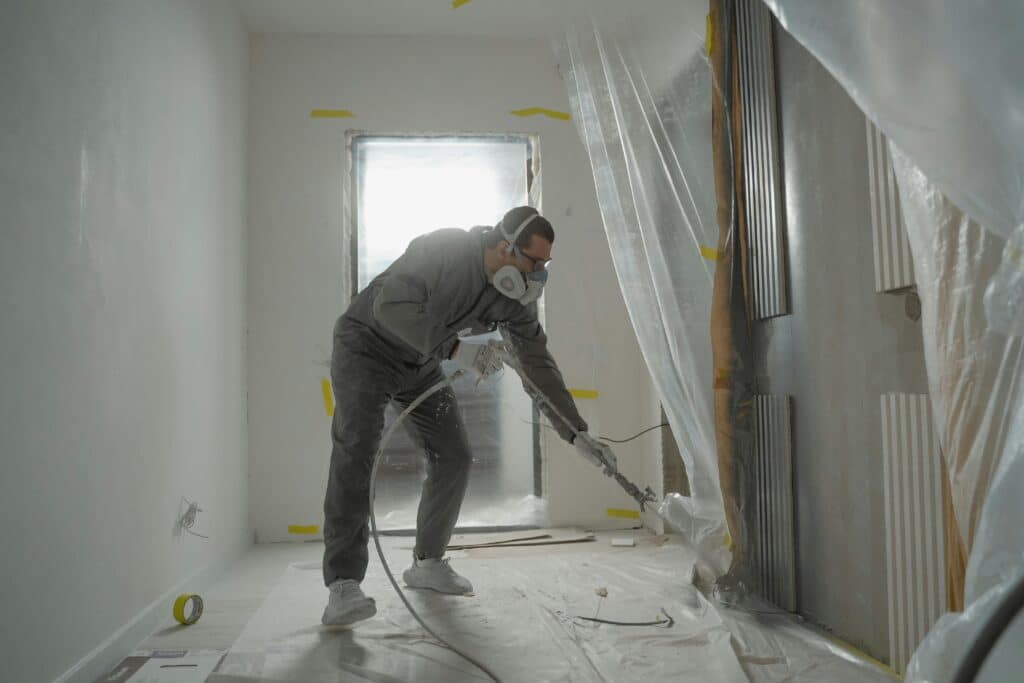Waterproofing Tips for Basements in Washington County Homes

A dry, protected basement is essential for a safe, comfortable home. Many Washington County homeowners face challenges with water infiltration, whether from heavy rain, snowmelt, or high groundwater levels. A wet basement is not only inconvenient but can lead to serious issues such as foundation damage, mold growth, and even compromised indoor air quality. Proactive basement waterproofing tips safeguards your foundation, prevents mold growth, improves energy efficiency, and protects your property’s overall value.
At Bedrock Home & Property, we urge homeowners to take early steps to save thousands of dollars in future repairs. Some waterproofing tips for basement that can save you from loss are:
Identify the Source of Basement Moisture
Before working on any waterproofing solutions, first identify exactly where water is entering your basement. Common sources include:
- Foundation cracks
- Hydrostatic pressure from surrounding soil
- Improper yard grading that directs water towards home
- Clogged gutters or downspouts
Water can also seep in through gaps around windows, doors, or poorly sealed wall penetrations. A careful inspection after heavy rainfall reveal signs such as damp walls, musty odors, or water seepage along the floor. Addressing these issues early ensures that your waterproofing efforts are effective and long-lasting.
Improve Exterior Drainage
Managing surface water is one of the most effective ways to prevent basement flooding. Simple improvements can make a huge difference:
- Ensure your yard slopes away from the home by at least 6 inches over 10 feet.
- Extend downspouts at least 15 feet from the foundation.
- Consider installing a French drain or dry well for areas with persistent water runoff.
Proper exterior drainage protects the basement and prevents soil erosion, damage to landscaping, and potential issues with siding. Maintaining clean and functional gutters and downspouts is equally important, as these systems direct rainwater away from your home’s foundation.
Seal Foundation Cracks
Even minor foundation cracks can allow water to seep into your basement over time, leading to more serious structural damage. Using hydraulic cement to fill visible cracks, followed by a waterproof masonry sealant, reinforces the walls and prevents moisture from entering.
Regular inspections, specially after heavy rainfall or spring snowmelt, help homeowners identify and repair small cracks before they become larger problems. Knowing how to seal basement cracks properly is one of the most cost-effective ways to prevent water damage, save on future repairs, and maintain the home’s structural integrity.
Install Interior Drainage and Sump Pump Systems
For homes prone to water intrusion, a high-quality interior perimeter drainage system paired with a sump pump provides reliable protection. This system collects water along the foundation and pumps it outside. Consider adding a battery backup sump pump to ensure continuous operation during power outages.
Proper maintenance of these systems is essential. Homeowners should:
- Inspect sump pumps at least twice a year.
- Test backup pumps for proper functionality.
- Keep interior drains clear of debris.
For homeowners’ unsure which system best suits their property, consulting with professionals can help determine the most suitable solution. For professional sump pump installation and interior drainage solutions, contact Bedrock Home & Property today.
Control Moisture and Humidity
Even without visible leaks, moisture can rise through concrete walls and floors, creating conditions for mold growth. To maintain a healthy basement environment:
- Install vapor barriers on walls and floors.
- Run a basement dehumidifier to keep humidity below 50%.
- Ventilate the basement regularly to allow fresh airflow.
Controlling moisture also prevents warped flooring, peeling paint, and musty odors, making your basement a healthier and more comfortable living space.
Combine Interior and Exterior Waterproofing
The best practical basement waterproofing approach combines exterior drainage improvements with interior waterproofing systems. Exterior improvements reduce water pressure on walls, while interior systems manage any water that penetrates.
This dual approach ensures year-round protection, particularly in Washington County, where snowmelt and seasonal storms are common. By addressing both exterior and interior sources of water, homeowners prevent costly repairs and enjoy a dry, functional basement year-round.
Schedule Regular Inspections
Regular inspections are essential for maintaining a waterproof basement. Checking your basement at least twice a year, in the spring and fall, helps identify early signs of water damage, such as peeling paint, condensation, or musty odors. Catching these problems early prevents costly repairs and ensures the home remains structurally sound.
Homeowners should also use inspections to review the functionality of sump pumps, drainage systems, and waterproofing solutions, ensuring that all components work fine before the next storm season.
Invest in Professional Waterproofing
While some DIY waterproofing solutions can be helpful, professional services provide long-term reliability and peace of mind. Experts can identify systemic issues, install high-quality interior drainage systems, perform crack sealing, and recommend the best sump pump installation.
Investing in professional basement waterproofing services protects your home, preserves property value, and prevents future problems from escalating into expensive repairs. For homeowners seeking expert guidance, visit our home maintenance resources.
Protect Your Home with Bedrock Home & Property
At Bedrock Home & Property, we believe a well-maintained basement is the cornerstone of a healthy home. Combining proper exterior drainage, interior waterproofing, regular inspections, and professional guidance ensures that Washington County homeowners can prevent flooding, mold growth, and foundation damage.
For more tips and expert advice on home maintenance, explore our blog and keep your property safe and dry year-round.
